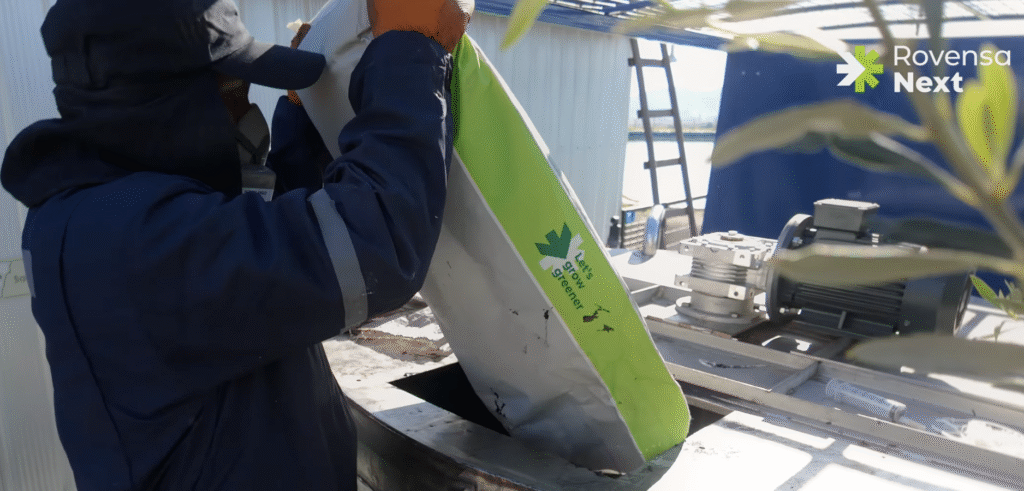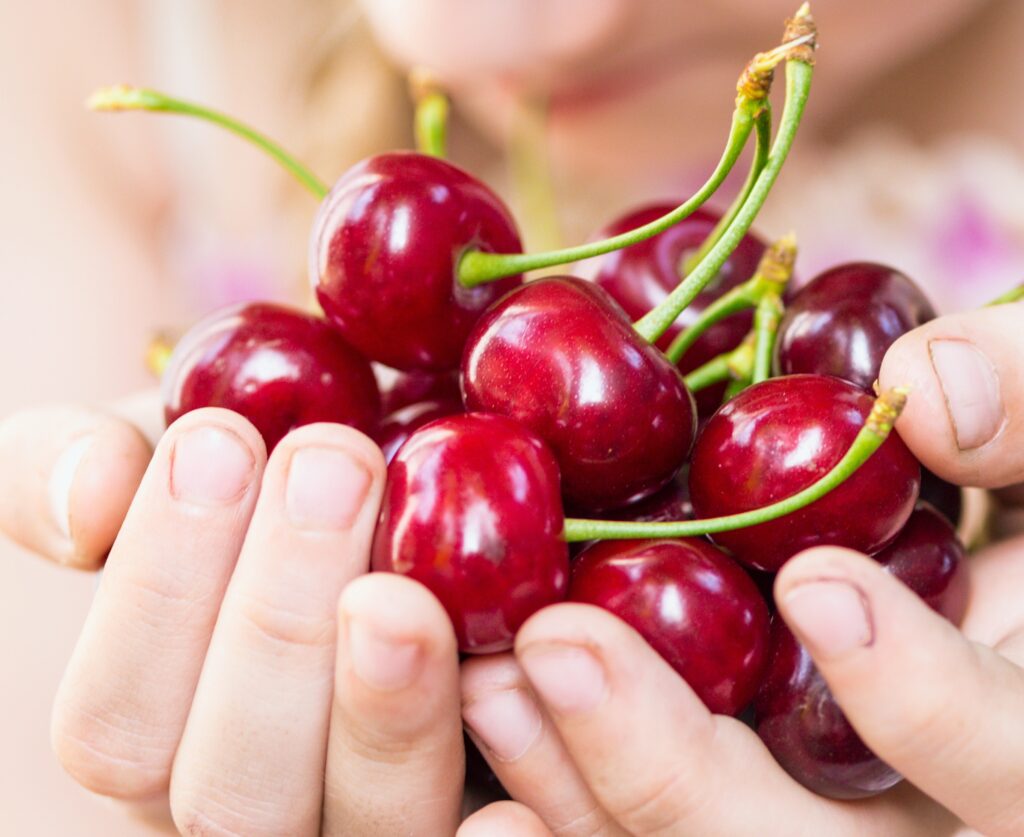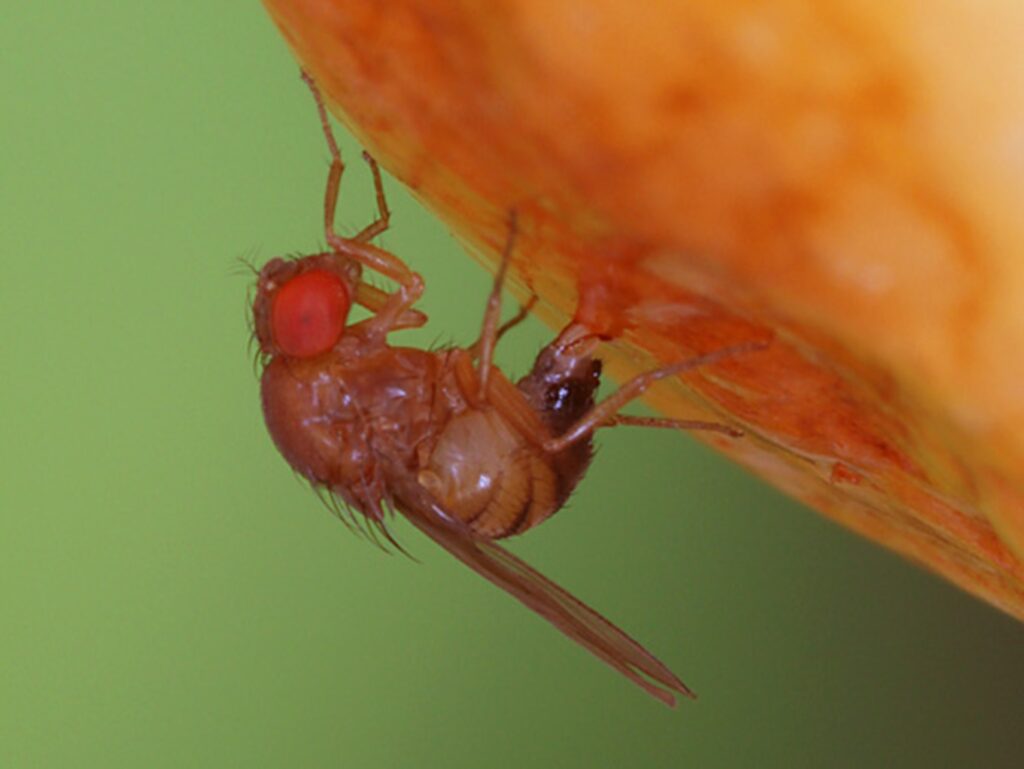Figure 1a and 1b: Chinese buyer evaluating fruit firmness.
It is no secret that cherry production has increased in Chile over the last 10 years. Since the Chinese consumer's preference for this fruit is key to this increase, it is important to ask which attribute is most important to them.
In reality, there is no attribute that is not important. The larger the caliber, the better the selling price; the more mahogany and more even the color, the greater the return to the producer; boxes free of defects and with green pedicels also have better acceptance. Therefore, it is not easy to choose a single attribute, or maybe it is?
Based on what we have seen in arrivals in China this season, although each attribute matters, it is the firmness that undoubtedly marks a strong preference. What does this mean? That this parameter, being present, already gains the acceptance of those who buy in the market and, therefore, is what consumers from such a distant country prefer.
Hence, the question arises: what is firmness? Is the perception of a consumer in Europe the same as that in Asia regarding this attribute? How do I measure it? How do I interpret these measurements? This is what we will try to explain in this article.
Firmness is an attribute of the texture of fruits, related to the structure of the cell wall, where shape, size and content of structural compounds (hemicellulose, cellulose and pectin) give different characteristics to this parameter.
The firmness of a tissue, such as that of fruit, decreases as the latter grows and matures, and this loss will depend on the composition of the cells as well as the state of maturity. Simply put, for cherries, the more colour there is, the less firmness there will always be. The initial firmness and its decrease will depend on how these cells and their unions were built during the first stage of fruit development. From this point on, all the management carried out in the field before and during this period becomes vital.
How to measure firmness? Since firmness is a mechanical property, one can use penetration with pulp breaking as in stone fruit, compression or deformation, techniques less used in fruit, can also be forms of evaluation. Regardless of which form is used, all generally use a unit of force as a reference. Thus, in stone fruit we refer to pounds, that is, the force necessary to introduce a standardized stem in diameter and penetration depth.
How do we do this with cherries? Since they are also stone fruits, but much smaller in size, it is impossible to use the same pressure gauge. So, what instruments are available?
For food analysis, there are laboratory instruments that can measure the textural properties of fruit and, therefore, its firmness. However, these are expensive and complex instruments for data analysis, which is why they are only used for research purposes.
Here, the Chilean industry was a pioneer in adapting the market offer with an easy-to-use and relatively low-cost instrument, the famous Durofel (Figure 2). This is a durometer that works based on the Shore type A scale, a standardized measurement that provides measurements from 0 to 100, which we associate with firmness. What precautions should be taken with these durometers? They must use the same type of stem and must be calibrated to apply a standardized force that, when deforming the fruit, the equipment interprets it with a hardness grade. This was not complex in Chile since the same brand of instrument was used for many years (Agrosta or Setup) and producers became accustomed to obtaining measurements of 75 Durofel units, equivalent to firm fruit that met the requirements of consumers in China.
Figure 2: Durofel equipment used massively by the Chilean cherry industry.
However, after a short time, the industry began to realize that the equipment presented variability in measurements (Defilippi et al., 2011: Figure 3), a product of who operates it. With large volumes, it is not easy to standardize measurements, so the search for new instruments began. Thus, we are currently operating with two devices: one measures by deformation (FirmPro®; Figure 4), providing the measurement in force necessary to deform the fruit surface by 1 mm, and Cherry Roller Tracker (Figure 5), which measures firmness by means of an impact sensor, where the greater the force of the impact, the greater the firmness. The incredible thing is that, having direct units in each device, we continue using the transformation to Durofel units.
Figure 3: Evaluation of measurement accuracy (variability) for Firmtech and Durofel using a rubber ball as standard (Defilippi, 2011). Firmtech is an instrument from another brand but similar to FirmPro.
Figure 4: FirmPro equipment developed by the company HappyVolt
Figure 5: Cherry Roller Tracker equipment developed by PT&I
For those using new equipment, as well as producers, they should start working in units that provide more information. Thus, having a firmness unit such as g/mm enriches the analysis.
We now have some clarity on what firmness is and how it is measured. The next question is: what level is firm? Or rather, what does our consumer consider firm? Our clients in China have a fairly high requirement in relation to firmness compared to the American or European market; they like crunchiness and this is directly associated with high firmness. Here, the industry has worked on standardizing firmness levels and, although there is no single number, we are all clear that in FirmPro units (g/mm), over 240 at harvest we are already meeting the requirements; obviously, the higher the value, the better.
In general, we measure firmness when the fruit arrives at the processing plant and is still at pulp temperatures above 15°C. Later, when cold, firmness usually increases a few points, so when interpreting the measurements it is necessary to consider whether they were taken hot or with fruit already below 10°C.
But we must also, as producers, make another change in the analyses. We cannot work with the average of the sample, since our consumer needs all the cherries to be firm. Therefore, the information provided by these new devices enriches the analyses by providing the dispersion of the data and can tell us how many fruits are below the threshold of 240 g/mm (Figure 6) and thus we can weigh when we run the risk of not meeting expectations at destination.
This is why firmness information is key and it is necessary to take the largest possible sample, in terms of number of fruits, and above all to take the best sample, ideally from different totes and different bins, in order to capture the variability of the orchard.
But let's see how the most important varieties in volume have behaved in relation to this attribute. Santina generally achieves the required firmness, although always at the limit, close to 240 and 300; on the other hand, Lapins has been much more variable between seasons and in this case, excess loads that do not manage to balance in the plant can be a problem, or poor handling under plastic covers. In some seasons we have seen how a high percentage of batches present high variability, represented by a large quantity of fruit that reaches firmness below 220 g/mm, but this last season with tighter loads we saw the tremendous potential that this last variety has; finally, Regina, which in general, easily reaches the minimum firmness and often considerably more (Figure 7).
That is why all the management in the orchard is important to obtain a high firmness in the fruit, to be attentive to how it is evolving until the harvest and not to lose it due to over-ripeness, since this attribute is essential to satisfy the consumer and to maintain good returns on this precious red fruit.
Figure 6: Firmness report by fruit variety Santina, Morza area, season 2023-24, lot with 88% in color 3 to 3.5 and 7% color 4. Average firmness 247 g/mm.
Figure 7: Average firmness and variability (number of lots with more than 20% of non-firm fruit) for main varieties produced, 2022-23 season.
Literature
Defilippi B. and Manriquez D. 2011. Evaluation of firmness measurement systems for table grapes and cherries used in the fruit industry. Revista Fruticola N° 2, pp 26 to 32.
Triokimün 2023. How do we evaluate the quality of cherries at harvest?: Some recent technologies. https://smartcherry.cl/postcosecha/como-evaluamos-la-calidad-de-las-cherezas-a-cosecha-algunas-recientes-tecnologias/










